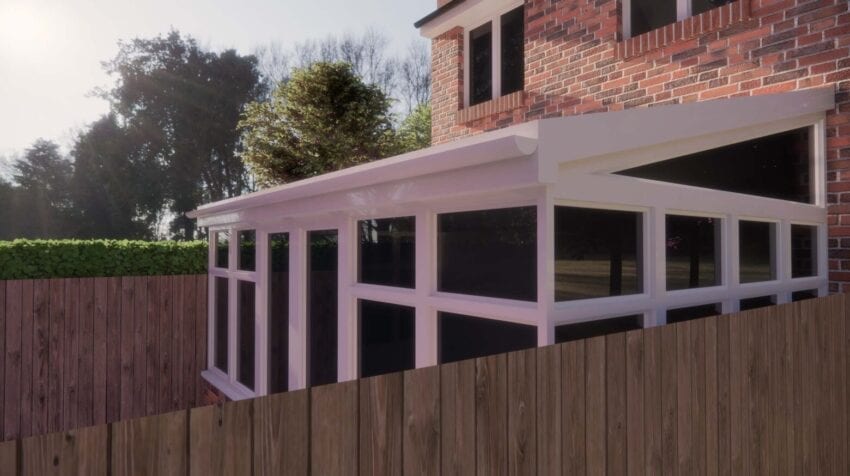
Office Hours: Mon-Fri: 08:30 -17:30
Telephone :0208 191 1609

Award Winning Architectural Design In Essex & East London
>Loft Conversion Plans


DO I NEED PLANNING PERMISSION FOR A CONSERVATORY?
Do I Need Planning Permission For A Conservatory – A Quick Note On Permitted Development Rights.
Assuming your property still benefits from having its permitted development rights (a quick call into your local authority Planning Dept will be ale to confirm this. Alternatively, many Councils have now published their planning constraints maps on their websites and you can simply put in your post code and find out if there are any planning constraints on your property that may affect your permitted development rights.
Another method of checking is to do a quick search through your Councils Planning Applications list for other houses in your street. If others have carried out similar works and obtain a lawful development certificate for the works then it is incredibly likely that you will be able to do the same.
If your planning search reveals that your permitted development rights have been removed its not the end of the world, it simply means that you will need to apply for householder planning consent and providing your proposals are inline with what you would have been allowed under your permitted development rights then the chances of obtaining householder approval is very good.
So moving onwards and assuming you have your permitted development rights intact lets see what you can build in the way of a conservatory without planning permission.

Do I Need Planning Permission For A Conservatory?
Why A Conservatory?
For Anyone looking to add additional space to their home a conservatory can be a cost handy way of achieving this. Many conservatories are installed within a week or two as well which is considerably less time than it would take to build a conventional home extension.
One thing you will need to consider however is whether or not you will require planning permission for your conservatory and this is where our helpful little guide comes along and hopefully answers this question for you.
Adding A Conservatory To The Back Of My House Without Planning Permission
If you are adding your new conservatory to the rear of your home and it is within 2m of a boundary wall or fence then the maximum eaves height should be no greater than 3m.
“In case you were unsure what the ‘eaves’ is – This is the underside of the soffit or fascia that usually holds the rain water gutter for the conservatory”
The height to the top of the roof must not exceed 4m at any point.
This measurement is taken to the highest point of the roof and should your conservatory be of a traditional style with Finials then this measurement would be from ground level right up to the top of the largest Finial.
Note: In case you were unsure, a Finial is the name given to those little spikey things that often go on top more traditional conservatories.
If you live in a detached house then your conservatory can extend beyond the rear wall upto a maximum of 4m.
For semi detached and terraced houses the depth of your conservatory can be no greater than 3m
Where not on designated land (Article 2(3)) or a site of special scientific interest this limit is increased to 8m for detached houses and 6m for all others.
Please note however that in order to take advantage of these ‘doubled up’ permitted development rights you will need to make an application under the prior notification scheme’ which is a 42 day process in which basic plans and information are submitted into your local authority and your neighbours are consulted and given 42 days to lodge any objections.
Something you would need to consider when opting for the prior approval scheme is that unlike normal permitted development you are not guaranteed approval which is why you MUST apply for prior approval BEFORE any works are carried out on site.
Just one neighbour objection under this scheme would result in Prior Approval being required and that basically translates into you then needing to apply for Planning Permission.
Something else you would need to consider when adding a conservatory to the rear of your home is the question: what constitutes a rear wall in the first place?
“Well that’s easy, it’s the rear wall across the back of my house right?”
The answer is a not quite as straight forward as this. You see, when defining what parts of a house would be classified as rear wall it was decided that:
The rear wall applies to the rear wall of the building on the day that it was built, or for older properties as it was on 1st July 1948.
This means that if your property benefitted from a side extension or garage added in the 50s, or later then the area behind this would NOT fall under permitted development and would of course require planning consent.
Adding A Conservatory To The Side Of My House Without Planning Permission
If you are adding your new conservatory to the side of your home and it is within 2m of a boundary wall or fence then the maximum eaves height should be no greater than 3m.
“In case you were unsure what the ‘eaves’ is – This is the underside of the soffit or fascia that usually holds the rain water gutter for the conservatory”
The height to the top of the roof must not exceed 4m at any point.
There are no stipulations on how close or far away from the boundary wall or fence you are allowed to build your new conservatory provided the total width of the conservatory is no greater than 50% of the width of your home.
Don’t forget, when we are referring to the width of your home, it means the width of your original house on the day that it was built or as it stood on 1st July 1948. Any previous extensions added, even if they were carried out many decades will have an effect on how wide you will be able to build your new conservatory.
Do I Need Planning Permission For A Conservatory?

In The Image Above You Will See The House Has A Previous Side Extension. The Conservatory Is Only Accross Width Of The Original House Therefore It Is Classed As Permitted Development.
If The Conservatory Was To Be Widened So That It was also Built off The Back Of The Previous Extension Then This Would Require Planning Consent.
Do I Need Planning Permission For A Conservatory - A Few More Things To Consider...
Under no circumstances will you be allowed to build over more than half the area of land around the “original house”*.
Sheds and other outbuildings must be included when calculating the 50 per cent limit.
The term ‘original house’ means the house as it was first built or as it stood on 1 July 1948 (if it was built before that date). Although you may not have built an extension to the house, a previous owner may have done so.
Another very important note to add here is that If you live in a ground floor flat or maisonette then you do not have the same permitted development rights as someone who lives in a house – or to be more precise you have zero permitted development rights at all, and your conservatory will require Full Planning Consent before you can build it.
There are more some more things that you need to consider when building a conservatory without planning permission and some may surprise you, you may even have friends and relatives who have fallen foul of one or two before.
A very commonly overlooked one that we receive a call into the office about most weeks is all down to the building materials used.
For a conservatory to comply with permitted development then the materials used in any exterior work must be of similar appearance to those on the exterior of the existing house.
The most obvious one here is that if you have a rendered house then you cannot put up a conservatory finished in facing brickwork or visa versa – If you do, you will need to apply for Planning Permission.
The second one here of course is the windows. If your house has white casement windows and you add a conservatory with grey casement windows then this will also require planning permission.
Do I Need Planning Permission For A Conservatory?
Adding A Conservatory To My Home Without Planning Permission – A Cautionary Tale
So you have gone and added a conservatory to your home and a few years down the line you decide to sell up and move to a new home.
You find a buyer and begin the sales process. Half way through the buyers solicitor carries out the standard checks and can see no record of planning permission being sought (or given) for your conservatory.
It is at this stage that we receive many a call from a very stressed individual asking how quickly we can provide a set of drawings and apply for a lawful development certificate for their conservatory.
This situation is not ideal for the homeowner looking to sell as they could potentially lose a buyer. It is also far from ideal for us as we will embark on a project where we are being chased continuously through the council process by the seller who will be under considerable pressures of their own.
In an ideal situation, a lawful development will be granted and the sale will go through.
What happens however if one of the common mistakes mentioned previously have taken place?
The short answer is that the lawful development certificate will be refused and then the seller is thrown into a whole different ball game of applying for retrospective planning permission for an unlawful conservatory and in all likelihood will also lose their buyer.
How could all of this of been avoided? We answer this question in the chapter below.
Adding A Conservatory To My Home Without Planning Permission – How To Remove All Risk
So you have read all the way down to the bottom of this Article and are now looking for a way to add a conservatory to your home without planning permission that is totally risk free.
We have three magic words for you and they are ‘Lawful Development Certificate’
Basically a lawful development certificate is a legal document that your council will provide you with to confirm that your conservatory does indeed comply with Permitted Development and is exempt of requiring planning permission.
All you need to get your hands on a lawful development certificate is to send a set of basic plans into the council together with a fee of £126.00 and the council will look over the drawings and issue a certificate confirming everything is in order.
A register of your lawful development certificate will be added to your property record so that it shows up in any searches should you ever decide to sell your home.
In order to make it easy for anyone needing a lawful development certificate we have created a very handy fixed price package that includes everything you need to get one for your conservatory.